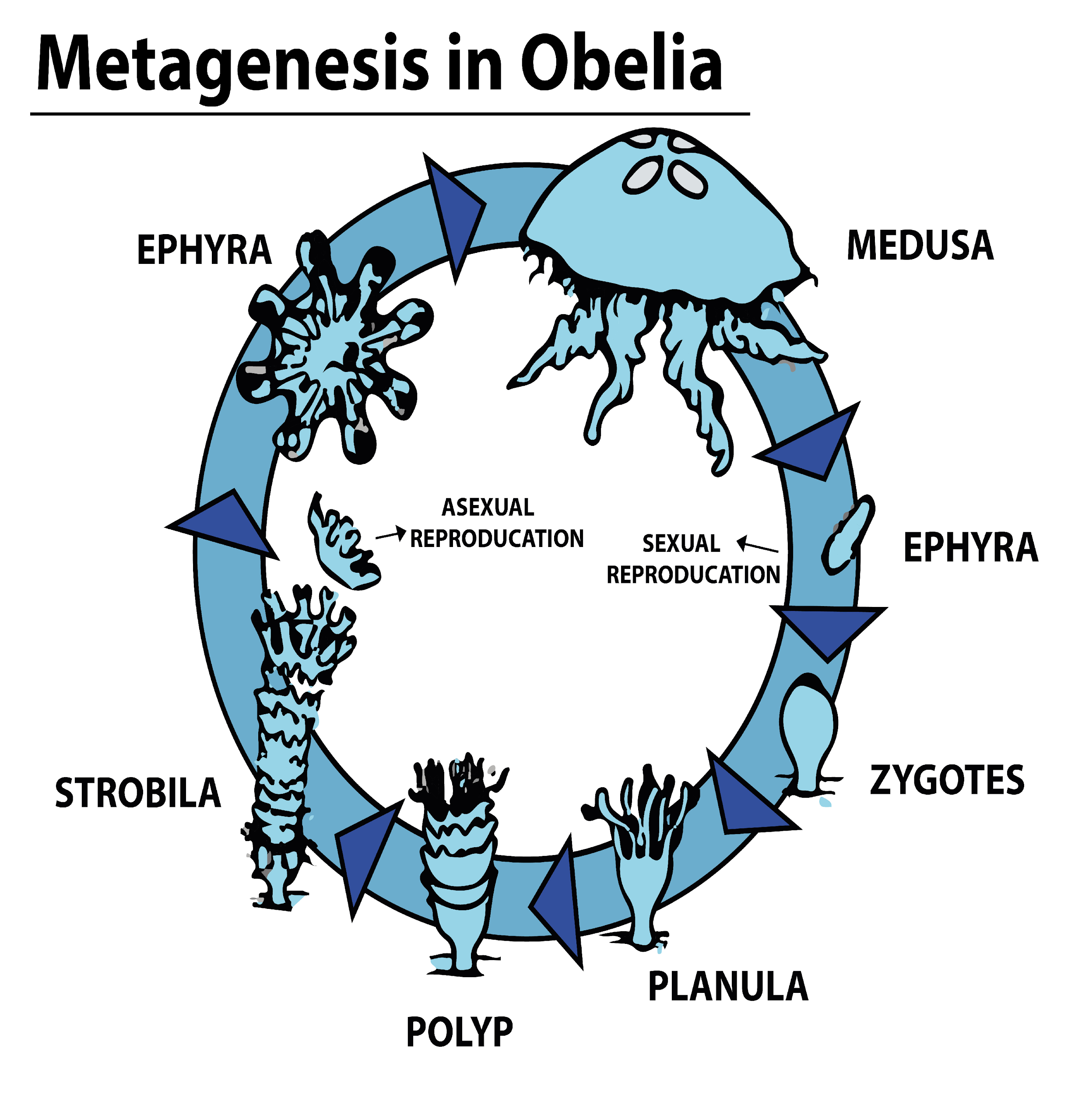
Define Metagenesis. Give a suitable example
Answer
577.2k+ views
Hint: In some lower animals and plants, the parent body of an organism undergoes specific changes that are both structural and functional. These changes are also termed as alternation of generations. This is seen in organisms like Obelia which belong to the phylum Cnidaria.
Complete answer:
In some organisms, the diploid generation of the organism(sporophyte) changes into the haploid generation or the gamete producing body (gametophyte), and the gametes fuse to form a zygote which develops into the sporophyte. This cycle is known as the alternation of generations or metagenesis. Metagenesis is shown by organisms belonging to the phylum Cnidaria and some algae, fungi, mosses, ferns, and seed plants.
Metagenesis in the animal kingdom:
Cnidarians exhibit two forms in their life cycle - the polyp form and medusa form. Polyps are the sporophytes and produce medusae asexually, while the medusae forms are the gametophytes which produce the polyps sexually
Example - Obelia.
Metagenesis in Plant kingdom:
In algae, mosses, ferns, seed plants, and fungi, alternation of generations are common. The sexual phase, called the gametophyte (haploid), produces gametes, and the asexual phase, or sporophyte (diploid), produces asexual spores.

Note:
The alternation of generations is most often referring to plants. Most plants that we see today spend the most time in their asexual phase. The structures that we know as ferns, trees, and flowers are the asexually reproducing structures of the plant. The plants only sexually reproduce to produce new plants that grow into new trees, flowers, and ferns.
Among the animals, many invertebrates show an alternation of sexual and asexual forms, but the alternation of haploid and diploid generations is unknown.
Complete answer:
In some organisms, the diploid generation of the organism(sporophyte) changes into the haploid generation or the gamete producing body (gametophyte), and the gametes fuse to form a zygote which develops into the sporophyte. This cycle is known as the alternation of generations or metagenesis. Metagenesis is shown by organisms belonging to the phylum Cnidaria and some algae, fungi, mosses, ferns, and seed plants.
Metagenesis in the animal kingdom:
Cnidarians exhibit two forms in their life cycle - the polyp form and medusa form. Polyps are the sporophytes and produce medusae asexually, while the medusae forms are the gametophytes which produce the polyps sexually
Example - Obelia.
Metagenesis in Plant kingdom:
In algae, mosses, ferns, seed plants, and fungi, alternation of generations are common. The sexual phase, called the gametophyte (haploid), produces gametes, and the asexual phase, or sporophyte (diploid), produces asexual spores.

Note:
The alternation of generations is most often referring to plants. Most plants that we see today spend the most time in their asexual phase. The structures that we know as ferns, trees, and flowers are the asexually reproducing structures of the plant. The plants only sexually reproduce to produce new plants that grow into new trees, flowers, and ferns.
Among the animals, many invertebrates show an alternation of sexual and asexual forms, but the alternation of haploid and diploid generations is unknown.
Recently Updated Pages
Why are manures considered better than fertilizers class 11 biology CBSE

Find the coordinates of the midpoint of the line segment class 11 maths CBSE

Distinguish between static friction limiting friction class 11 physics CBSE

The Chairman of the constituent Assembly was A Jawaharlal class 11 social science CBSE

The first National Commission on Labour NCL submitted class 11 social science CBSE

Number of all subshell of n + l 7 is A 4 B 5 C 6 D class 11 chemistry CBSE

Trending doubts
Differentiate between an exothermic and an endothermic class 11 chemistry CBSE

10 examples of friction in our daily life

One Metric ton is equal to kg A 10000 B 1000 C 100 class 11 physics CBSE

Difference Between Prokaryotic Cells and Eukaryotic Cells

1 Quintal is equal to a 110 kg b 10 kg c 100kg d 1000 class 11 physics CBSE

State the laws of reflection of light




